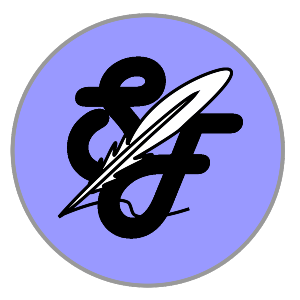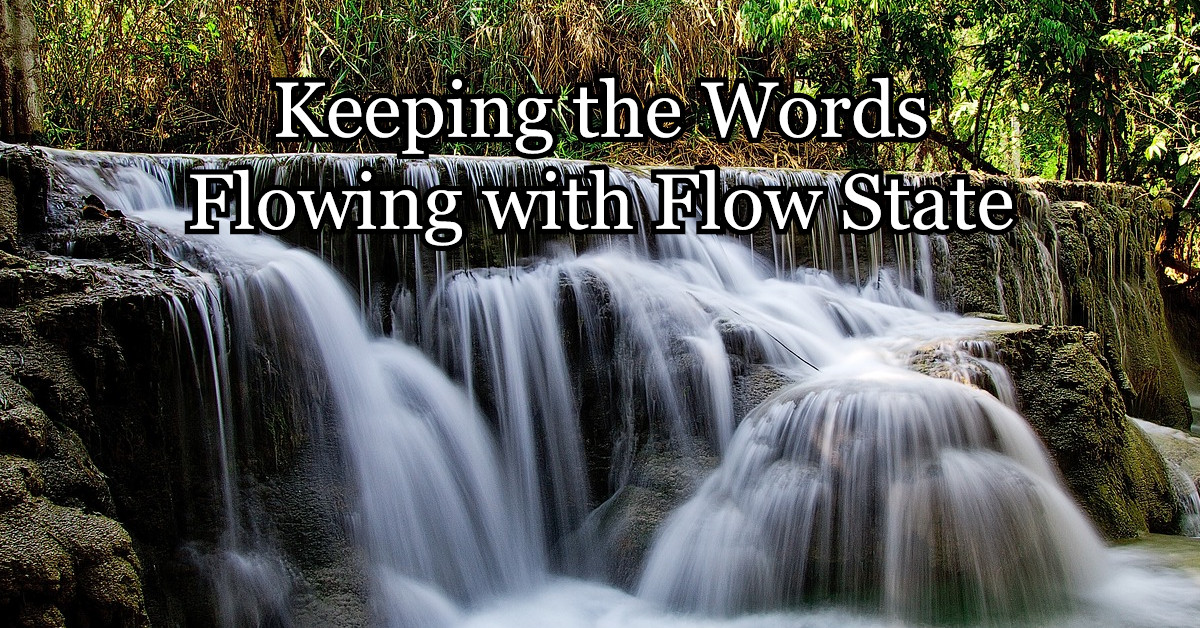I attended the recent RMFW Gold Conference looking for ways to increase my creative output. It takes me months to write a 4k-word short story. Unless I become more productive, completing a novel will be Herculean.
Nikki Terpilowski’s session on flow state promised a solution, but flow state sounded kind of woo woo to me. Light a candle and meditate? I’d have better luck sacrificing a ram to the nine Greek muses. And so, with skepticism in my head, desperation in my soul, and coffee in my cup, I stumbled into The Mindful Writer: Techniques for Tapping Into Your Inner Creativity.

Surprisingly, flow state is a real thing. The evidence includes changes in brain waves consistent with concentration, production of certain neurochemicals, and documented increases in performance. I should’ve known flow was real. As a life-long musician, I have entered flow state thousands of times. If I can tap into flow state while playing drums, I ought to be able to tap into it while writing fiction, too.
What is Flow State?
Flow is an optimal state of consciousness characterized by high focus and productivity. It has been documented in writers, musicians, artists, computer programmers, and even athletes. When in flow state, people lose their internal, critical, negative voice. Without that internal critic, the task becomes more enjoyable, which increases both creativity and productivity.
For writers, we become fully engaged and immersed in our stories. Settings, characters, and conflicts interconnect and support each other. The words flow effortlessly from our brain through our fingers to the keyboard. Every word is better than the last. We want to keep writing because it is so enjoyable. We surprise ourselves with our word count. We’re in the zone. Everything else falls away. It is a fun, positive, and effortless experience.
We’ve all been there. We’ve been struck with a wonderful idea, ran to the keyboard, and experienced several hours of productivity and enjoyment. The next day, the muses had abandoned us, and we cried for them to come back while we drank cheap scotch on the cold linoleum floor.
How do I Make Flow State Happen?
It turns out there are a few simple ways to induce flow state. Nikki provided some tips that might help.
- Establish a writing space. This might be your den, your walk-in closet, or a nearby coffee shop.
- Set aside a dedicated block of time. Life in the 21st century being what it is, you might not have the same block everyday, but strive for as much consistency as you can get.
- Eliminate distractions. Turn on do not disturb. Close email clients and messaging apps. If you have a tendency to focus too much on what you just wrote, consider turning off or dimming your monitor.
- Clear your mind of whatever else you were thinking about or dealing with. To do this, take a walk or do some stretches. Yes, some writers light a candle and meditate. Others play an energetic song.
Take off your tin foil hat. These are not magical incantations designed to compel the blessings of the muses. They are psychological hints that, with practice, your brain will eventually associate with creative writing. We all have that Pavlovian response deep within our brains. I, for one, will readily admit I’m a dog if it means I can tap into it.
Practice—I hope you didn’t skip over that word. When I was a kid practicing drums every single day, I wasn’t just learning to drum. I was learning to enter flow state. Flow state comes with repetition. For years, I’ve heard people say “write everyday.” I finally understand why. When you write everyday, you’re not just learning to write better, you’re learning to flow easier.
Nikki described flow state as a positive feedback loop. The pleasure of writing pushes you deeper into flow state, which increases the pleasure, which deepens the flow state. But if the task isn’t enjoyable, flow state will remain elusive. If you’re having trouble entering flow state, try these tips to make writing more enjoyable.
- Establish clear, realistic goals. Set a goal of 500 words, and congratulate yourself when you achieve it. Don’t write beyond your skill level. If your goal is Pulitzer-quality prose, you’re setting yourself up for a tortuous and disappointing experience, unless you’re Jennifer Egan or Richard Powers.
- Write a chapter or scene that interests you. Remember what got you excited about this story in the first place. Spend an hour drafting one exciting scene, then leverage flow state to make progress on that sagging middle.
- If only the tedium is left, set the whole project aside for half an hour and write to a fun prompt.
Remember, flow state works because you’re doing something you enjoy. You know you love to write. It’s just the current project that makes you want to gouge your eyeballs out with a fork. Do some fun writing for a while, and it just might kick start flow state.
For better or worse, we live in an age of continuous connectivity. Information, communication, and entertainment are never more than a mouse click away. Turning on do not disturb mode doesn’t eliminate the temptation of social media and discussion boards. Thanks to cellular, even smashing my router with a hammer won’t help, though it does make a pleasant crunching sound. I’m trying to divide the day into blocks of time. Internet in the morning, then no more. That leaves the afternoon for writing, and the evening for reading. What are you doing to avoid the allure of the internet? Post your suggestions as a comment.
For those of you who have been writing daily since childhood, flow will come easily. The rest of us will need to work on it for months or years. From the day I first picked up a pair of drumsticks, it took eight years of daily drumming before I could comfortably jam with fellow musicians. I expect years of daily writing before I’m able to flow as an author. There are no instant fixes. If sacrificing rams to the nine Greek muses worked, there’d be a lot more bestselling novelists and a lot fewer rams.
Whether I’m in flow state or not, putting the above tips into practice has already increased my productivity. It will increase yours, too. So set up a block of time, turn on do not disturb, light a candle, and let the words flow.

Paul is a prizewinning speculative fiction author, technology blogger, and former punk rock drummer. At age six, he saw 2001: A Space Odyssey on the big screen, which lead him to a collection of Clarke’s short stories and a lifelong insatiable appetite for mind-bending science fiction. His work is published or forthcoming at Uncharted Magazine, Amazing Stories, Creepy Podcast, Sci-Fi Lampoon, and others. Originally from Flint, MI, Paul resides in Colorado, where he tries to avoid reliving his punk rock days.


Great piece, Paul. I looked for the book The Mindful Writer: Techniques for Tapping Into Your Inner Creativity, but couldn’t find anything. Who wrote it? Thanks and keep on writing!!!
This was a session at the RMFW conference, a fact that was lost in my rambling prose. Unfortunately, Nikki didn’t make her slides available. But plenty of flow state information and resources exist all over the internet. My advice: do some web searches, light some candles, and turn on Do Not Disturb. LOL.